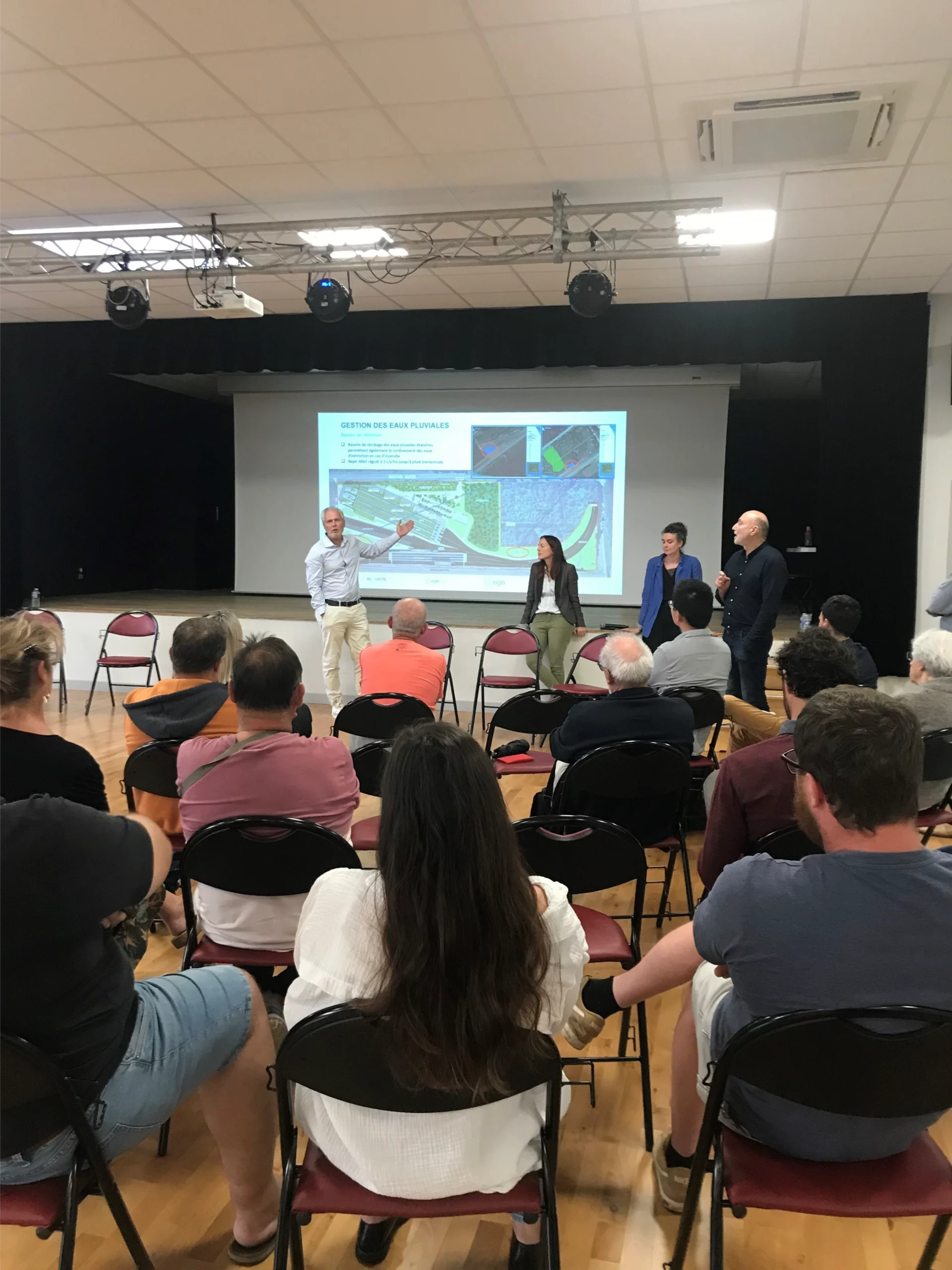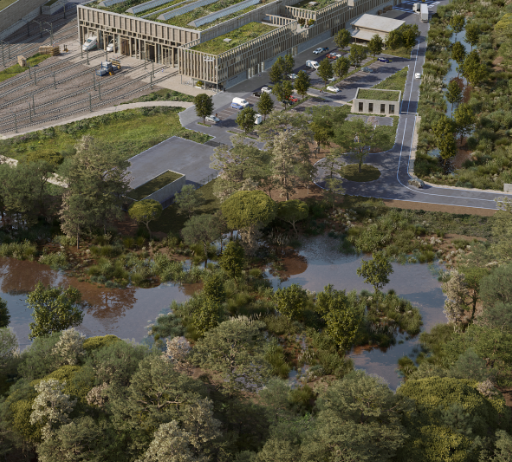stabling and maintenance facility (SMF)
A concerted project
In order to anchor this project in a spirit of transparency and dialogue, LISEA has been committed, from the outset of the project, to a process of information and consultation with local residents. Following on from the three public meetings held between December 2021 and November 2022, LISEA organised three meetings with local residents between September and December 2023 to discuss key issues relating to the project.
- “Development, landscape integration and construction site”: 21 September 2023
- “The environmental approach”: 19 October 2023
- “Benefits for Marcheprime and the region”: 16 November 2023
These meetings provided an opportunity to learn more about the project, to respond to the concerns of the people of Marcheprime, but also, and above all, to gather their suggestions for improvements and to further anchor the SMR in a spirit of co-construction.
A sustainable state-of-the-art industrial site
This project to promote ecological transition can only be designed, built and operated with particular attention to its impact on the environment.
An eco-responsible building
The design of the « SMF » is inspired by the HQE approach and incorporates the criteria of the BDNA (Bâtiment Durable en Nouvelle-Aquitaine, Sustainable Building in Nouvelle-Aquitaine) silver level approach.
LISEA has also voluntarily undertaken to comply with the guidelines of the independent BiodiverCity label, which attests to the actions taken to promote biodiversity at the various stages of the project, from design to operation.
In use, the « SMF » will implement measures to reduce its water consumption with, for example, a water recycling rate of over 80% for the train washing machine. Half of the project’s energy requirements will be met by renewable geothermal energy, which should cover a very large proportion of the project’s heating and cooling needs. The choice of LED lighting will also ensure that consumption is more economical and respects the environment of the Landes de Gascogne Regional Nature Park.
A site that limits its environmental footprint
Located on a 14-hectare site, the project is also designed to maintain biodiversity and respect protected plant and animal species. With this in mind, two rainwater infiltration basins – totalling 2.5 hectares planted with vegetation – and 5 hectares of open land enriched with almost 300 new plantings will ensure ecological continuity. A dense hedgerow (more than 800 trees of regional species) will also create a green fringe along the departmental road and cycle path that run alongside the site.
In total, almost 50,000 m² of green spaces will be created on site, in addition to the planted basins. The list of species has been drawn up by ecologists and is subject to validation by government departments. Only local species that comply with the recommendations of the Landes de Gascogne Regional Nature Park have been selected.
In addition, to compensate for the 12 ha of American red oak cleared on the 14 ha site, LISEA has made a commitment to the government departments to implement an ambitious programme of compensatory measures covering 65 ha for the benefit of flora and fauna (25 ha of compensatory afforestation, 1.5 ha of “wetland” compensation and 38.5 ha of fauna-flora compensation, in particular for one of the region’s emblematic species, the Dartford Warbler).
Commitments to quality of life for local residents
Noise emissions from the « SMF » will be reduced in strict compliance with standards by the creation of noise barriers offering the best external acoustic treatment.
In accordance with regulations and compared with the existing situation, maximum noise levels may not exceed 5dB(a) during the day and 4dB(a) at night. From Bordeaux, traffic will be stopped well upstream of Croix-d’Hins, in unpopulated areas in the commune of Cestas.




